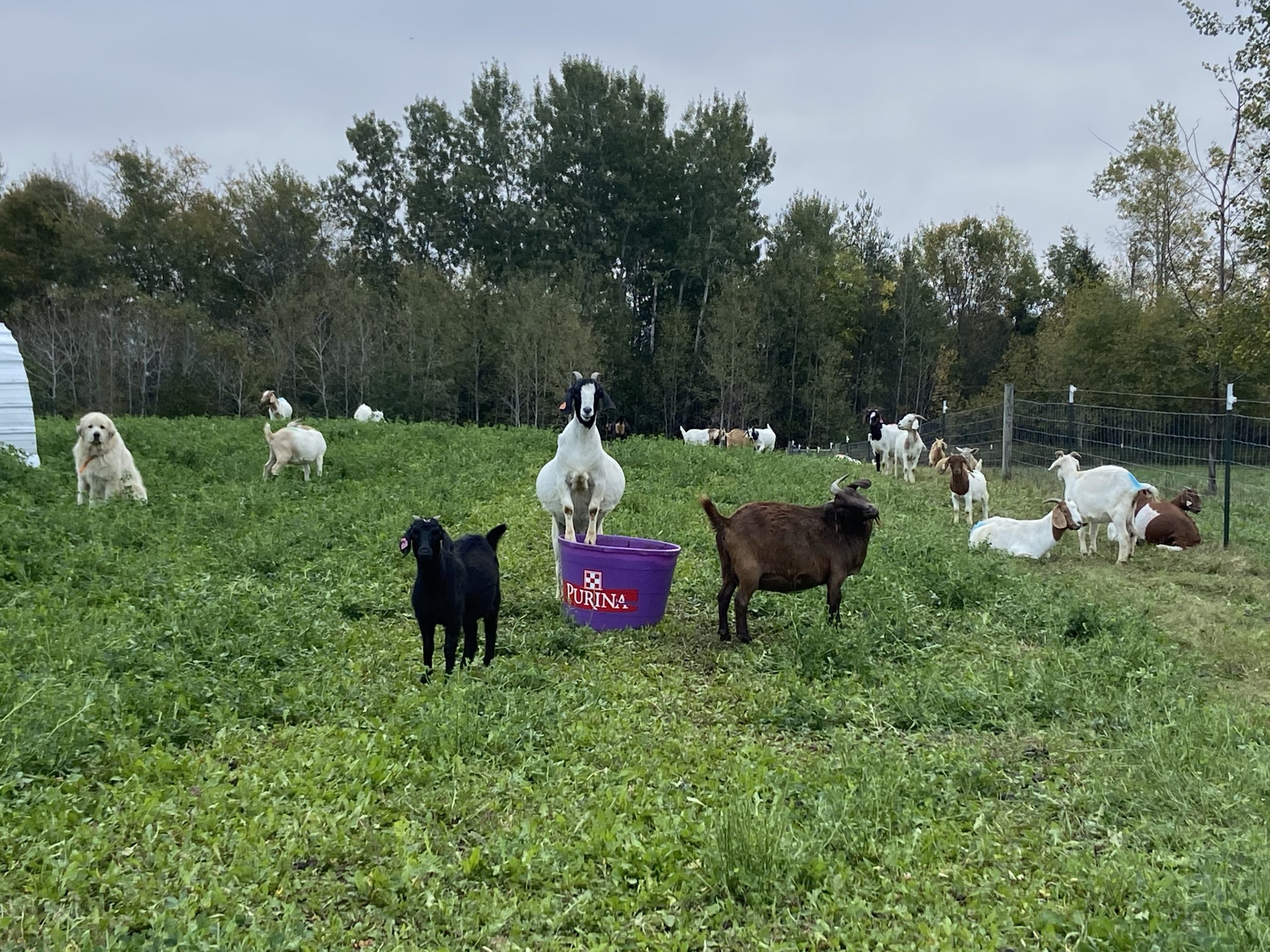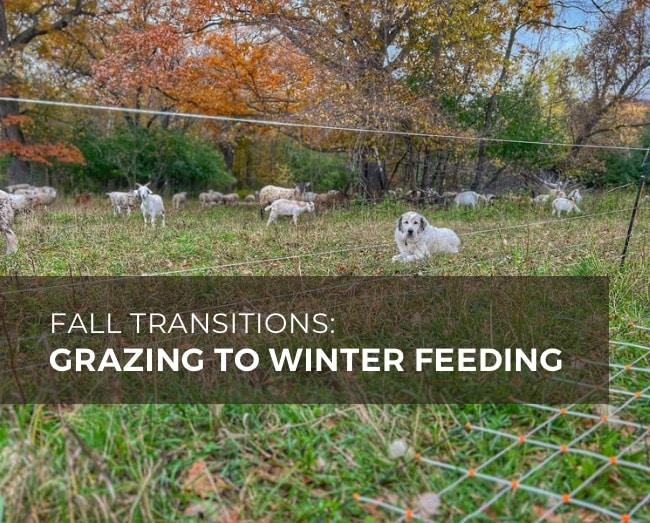As fall progresses we are transitioning our herd of goats and sheep from rotational grazing to winter bale grazing.
This grazing season was a bit shorter than usual due to our drought like conditions this past summer. While we finally started to get more consistent rain late summer, the dry spell limited our seasonal use of our pastures for grazing. Typically we try to graze until November 1, but ended around mid-October this year.
Factors influencing our fall transition period
We are in a transitional period right now for a few reasons before we will officially start bale grazing:
- Give our pastures more rest and regrowth before they go dormant for the season, allowing for a little bit of a period of extended grazing season
- Minimize damage to the pasture from hoof action as it becomes more muddy with more fall rain
Fall transition grazing process
Here’s what we’re doing during this fall transition with our herd of goats and sheep:
- Keeping them in brushy paddocks outside of our pastures where extra pressure from animal impact with hooves or grazing isn’t as much of an issue compared to pasture.
- Supplementing feed with round bales of hay.
- Providing a supplement tub, such as Purina’s Accuration tub, to help maintain a level of nutrition as our herd transitions from fresh forage to dry hay.
- Added pasture shelters in areas where we may not have used them in the summer based on available brush and tree coverage.
- Access to water, keeping in mind overnight freezing temperatures.
In Wisconsin we also have limitations on how we can do extended grazing with stockpiled forage due to freezing ground and snow. At a certain point we can’t use portable fence to divide our pastures into paddocks. At that point we’ll start to bale graze.
More about using Purina’s Accuration high-fat tub
To make sure our goats and sheep are getting the nutrients they need we have started to supplement each group of goats with Purina’s Accuration high-fat tub. It’s a protein block with fat, vitamins and minerals to help balance nutrient deficiencies in fair quality forages. The added fat helps with body conditioning and reproductivity for our goats.
Here’s what I like about these tubs:
- Unlike other sheep and goat tubs, my flerd does not gorge themselves on it and eats it when they need it.
- As we move into late fall and stockpiled forage, their intake of the tub increases.
- Now that we have sheep in our herd, I like that it can be used for both species since it doesn’t have copper.
- It’s also formulated for all weather. If we get rain, I’ll roll the tub on its side to drain the water (I would drill a hole in the bottom, but then I couldn’t make use the tub when it’s empty!!).
I still need to build a little trailer or skids for the tubs so they’re easier to move (200 lbs. gets a bit heavy!)

Learn more about raising goats in the winter
You can learn more about how we make the winter transition with our goats in these related articles:
- Keeping goats warm in the winter [Cold weather tips]
- Bale grazing basics for goats and sheep
- Goat hay feeders
- Goat shelter: basics, plans and ideas

LEAVE A COMMENT
Comments